Xiaomi Mi 5s Plus: Hands-on with the chinese Pixel Phone
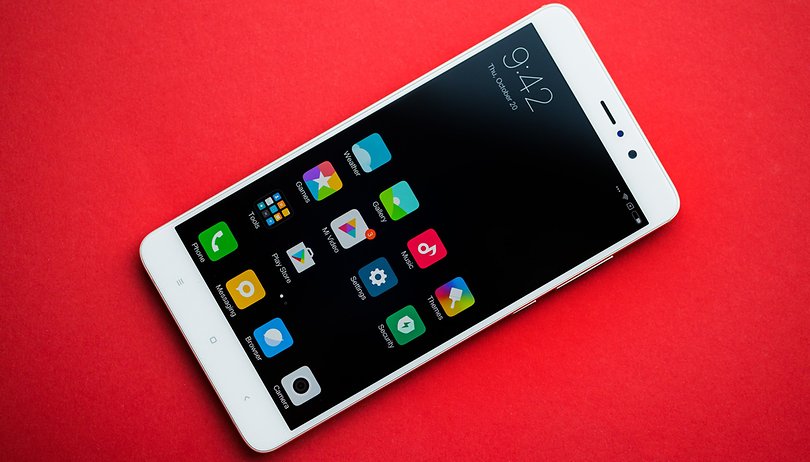

Xiaomi is known for selling smartphones with top hardware at a bargain price. Although Xiaomi smartphones are not officially available in the US, they can be bought through importers. We have a 5.7-inch Xiaomi Mi 5s Plus and can show you in this first hands-on look at what the Chinese smartphone can offer, and whether it might be an alternative to the Google Pixel XL.
Xiaomi Mi 5s Plus release date and price
It is not so easy to get a Xiaomi smartphone in the US. You can't just go to the nearest electronics store or network supplier shop and buy one. The only way to get a Xiaomi smartphone is to either fly to China and buy the smartphone yourself, or to opt to use an importer, such as Trading Shenzhen, which kindly provided the Xiaomi Mi 5s Plus that we have.
In China, the Xiaomi Mi 5s Plus is offered in two different memory combinations. The cheapest version, with a price of 2,299 yuan (about $399) is equipped with 4 GB of RAM and 64 GB of internal memory. If that is not enough, there is an option with 6 GB of RAM and 128 GB of internal memory. That version costs 2,599 yuan in China (about $383).
The prices for the Xiaomi Mi 5s Plus are higher in the US, of course. For example, the Xiaomi Mi 5s Plus with 4 GB of RAM and 64 GB of internal memory costs $429 from nis-store.com, while the version with 6 GB of RAM and 128 GB of internal memory costs $499.
Xiaomi Mi 5s Plus design and build quality
In the Mi 5s Plus, Xiaomi has made a few design details different from those of the Mi 5 presented at the Mobile World Congress 2016. Details such as: the camera and fingerprint sensor have been offset, and the back is now no longer made of glass but from brushed aluminum.
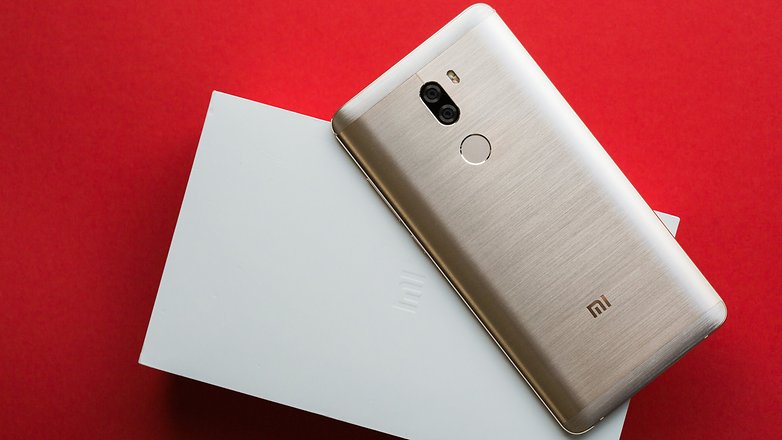
The numerous design changes will not be noticed by everyone, but anyone who already has had a Mi 5 will immediately recognize the change in design and craftsmanship. For example, the fingerprint sensor was moved from the front to the back of the device. This makes the Xiaomi 5s Plus more like a Huawei smartphone than a Samsung Galaxy S7 Edge.
The similarity of the Mi 5s to the Huawei can also be noted in the material used for the housing. The back side is no longer made of Gorilla Glass but aluminum instead. At the same time, Xiaomi has made sure that almost the whole case has been milled from one block of aluminum. For the numerous antennas for GSM, NFC, Bluetooth and Wi-Fi, narrow plastic tapes have been inserted into the housing frame and two narrow zones on the upper and lower sections of the back side.
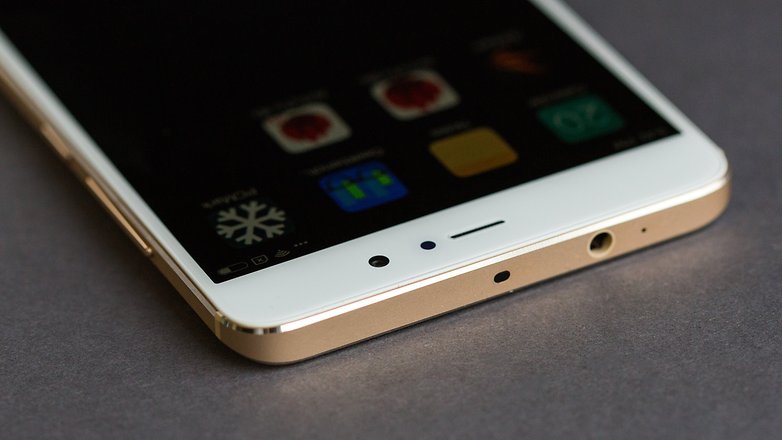
Overall, the craftsmanship of the Xiaomi Mi 5s Plus is at a very high level and can compete with that of Samsung, Huawei and Google, as well. The volume rocker and the on and off button are fit onto the right edge of the smartphone and the dual SIM card slide is set on the left edge. Only a slight difference was noticeable between the color of the SIM card slide and the rest of the housing on our gold-colored Mi 5s Plus.
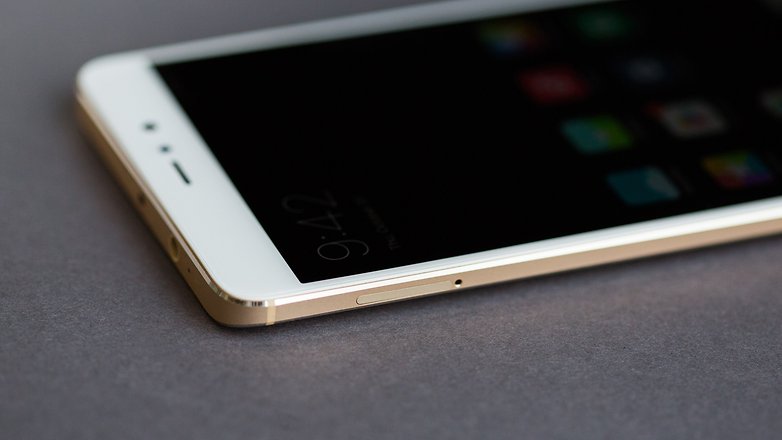
Xiaomi Mi 5s Plus display
The display of the Xiaomi "phablet" is possibly its only weak point because. Like the Huawei Mate 8, Xiaomi has limited the Mi 5s Plus to a liquid crystal display with full HD resolution. Considering the forthcoming Mi Note 2, the choice of the display is quite wise, as both smartphones belong to the phablet category and offer similar hardware equipment. So, if you're looking for a cheap yet powerful phablet, you can take advantage of the Mi 5s Plus. Additionally, if a dual-edge display and 2K resolution is required, take a look at the Mi Note 2, which was unveiled on October 25th.

Just because the 5.7-inch display resolves with a maximum 1024 x 1920 pixels doesn't mean that it is bad. Despite the low pixel density of 386 ppi in comparison to other top smartphones, the pictures, videos, and even games appear very sharp, and the colors are crisp for a screen with an LCD panel. Unfortunately, the maximum brightness level of the Xiaomi Mi 5s Plus is somewhat weak in comparison to top smartphones by other manufacturers.
Xiaomi Mi 5s Plus software
The Xiaomi Mi 5s Plus comes from the factory with MIUI 8 already pre-installed. This firmware by Xiaomi is based on Android 6.0.1 and is very much geared toward the preferences of the Chinese home market. An app drawer does not exist; all apps are stored on the home screens. Also, Google Apps are not preinstalled because there is no Google Play Store in China. A post-install with an APK is possible so that the Xiaomi Mi 5s Plus can be equipped with all the apps from the Play Store.
The innovations in MIUI 8, compared to the 7 series, are very extensive and we couldn't detail all of them in our hands-on. We will provide more details in our final test.
Another drawback: Xiaomi smartphones support only English and Chinese languages. This was also the case with our test specimen. But the very large Xiaomi community is already working on a MIUI 8 firmware that includes the Google Play Store for the Mi 5s Plus, so that you can install a firmware with english language later.
Xiaomi Mi 5s Plus performance
In terms of performance, the Xiaomi Mi 5s Plus is at the same level as the Google Pixel XL, which costs up to $869. As in the Google phone, the Xiaomi Mi 5s Plus also features Qualcomm's latest processor, the Snapdragon 821 with the Adreno 530 GPU. Furthermore, our test device had 6 GB of RAM and 128 GB of internal memory. All of that should theoretically be enough to run the Google Pixel XL into the ground.
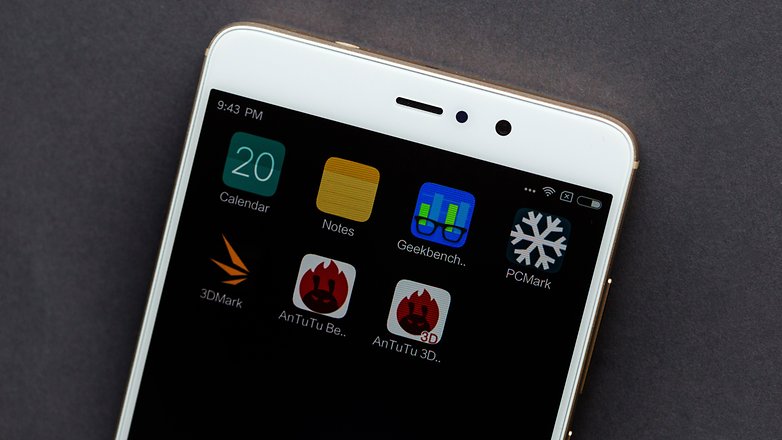
In the first benchmark run, the Mi 5s Plus can't outrun the Google Pixel XL despite 6 GB of RAM. Whether this is necessarily due to the Android 7.1 Nougat on the Google Pixel XL, or because of a slower internal memory, must be determined in our final review.
Xiaomi Mi 5s Plus camera
We've already noted the similarities in design to Huawei smartphones. The similarities continue in the main camera. Like the Huawei P9 and P9 Plus, the Xiaomi Mi 5s Plus also features a dual camera setup consisting of a color and a monochrome image sensor.
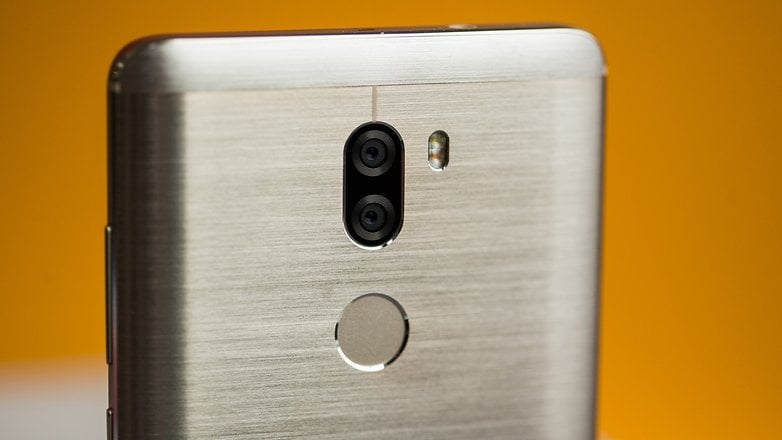
Of course, despite this similarity, there are also some differences. First in the resolution, because the image sensors of the Mi 5s Plus shoot photos with a maximum of 13 megapixels and with 1.12 µm. Thus, the pixels of the camera in the Xiaomi are smaller than in the Huawei P9. Conversely, the camera of the Mi 5s Plus has a larger aperture (f/2.0 instead of f/2.2).
At first glance, the front camera with 4 megapixels does not promise quality selfies, but the pixel size is quite large at 2 µm. In synergy with the f/2.0 aperture, this could point to good picture quality in bad lighting conditions.
Based on pure data, the Xiaomi Mi 5s Plus promises to be a good camera smartphone, but we have to discuss and test it extensively before making a final test report.
Xiaomi Mi 5s Plus battery
The energy storage of the Mi 5s Plus is rated at 3800 mAh and is thus larger than that of the Galaxy S7 Edge (3600 mAh) or the Google Pixel XL (3450 mAh). But the capacity of a Huawei Mate 9, which has a 4000 mAh battery, relegates the Mi 5s Plus as insufficient.
However, the pure capacity specification does not tell us anything about how long the smartphone can last under everyday use, and under extreme stress. Because the Mi 5s Plus comes with the latest processor, the Snapdragon 821 – just like the Google Pixel XL – it could overcome its low capacity to leave the Huawei Mate 8 behind. Theoretically. In the final tests, we'll provide you with the theory of the data.
Xiaomi Mi 5s Plus technical specifications
Early Verdict
If you ignore the usual points of criticism for an imported device – questionable warranty, no factory support for the local language and, where appropriate, long delivery times – then the Mi 5s Plus offers a top product for very little money. The Xiaomi Mi 5s Plus even has the technological potential to be a top smartphone threat. You will learn whether the Xiaomi phablet really meets these high expectations in our final review. But the signs already look good.















I wonder when will xiaomi manufacture a compact phone that could eventually fight on apple's iPhone 5S and SE.
Come on Xiaomi I believe in you.
Hello. What happened to a full review? thanks
What do you know...
4 flagship phones in 4 months......i dont understand wat the hell the r doing....disgusting